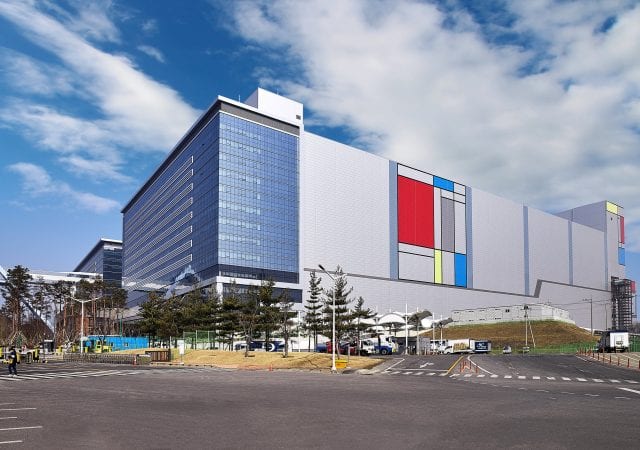Gigaphoton Inc. (Head Office: Oyama, Tochigi; President & CEO: Katsumi Uranaka), a manufacturer of light sources used in semiconductor lithography, announced on February 21, 2020 that it will add two new models to its ArF and KrF product lineups in 2020. The ArF immersion “GT66A” and the KrF “G60K” light sources will bring the very latest technologies to semiconductor lithography manufacturing.
Semiconductors

Samsung Electronics Begins Mass Production at New EUV Manufacturing Line
Samsung Electronics Co., Ltd., a world leader in advanced semiconductor technology, today announced that its new cutting-edge semiconductor fabrication line in Hwaseong, Korea, has begun mass production.
CEA-Leti’s Energy-Harvesting ICs Point the Way To Battery-Free Sensor Systems in Humans Or in Harsh Environments
In scientists’ quest for ambient-energy sources that can power sensor nodes in remote environments or difficult-to-reach settings where batteries are impractical, CEA-Leti takes a wide view. It is investigating harvesting systems ranging from micrometer-and-millimeter scale to centimeter scale or larger.
A Spookily Good Sensor
Scientists from the Research Center for Advanced Science and Technology (RCAST) at The University of Tokyo demonstrated a method for coupling a magnetic sphere with a sensor via the strange power of quantum entanglement. They showed that the existence of even a single magnetic excitation in the sphere could be detected with a one-shot measurement. This work represents a major advancement toward quantum systems that can interact with magnetic materials.
STMicroelectronics and TSMC Collaborate to Accelerate Market Adoption of Gallium Nitride-Based Products
STMicroelectronics (NYSE:STM), a global semiconductor leader serving customers across the spectrum of electronics applications, and TSMC (TWSE:2330, NYSE: TSM), the world’s largest dedicated semiconductor foundry, are collaborating to accelerate the development of Gallium Nitride (GaN) process technology and the supply of both discrete and integrated GaN devices to market. Through this collaboration, ST’s innovative and strategic GaN products will be manufactured using TSMC’s leading GaN process technology.
CEA-Leti and CEA-IRIG Demonstrate Quantum Integrated Circuit Combining Quantum Dot with Digital-Analog Circuits on CMOS Chip
Leti, an institute of CEA, and CEA-IRIG, a fundamental research institute, have created the world’s first quantum integrated circuit that demonstrates the possibility of integrating conventional electronic devices and elements with quantum dots on a CMOS chip.
Synopsys’ Fusion Compiler Adopted by AMD
Synopsys, Inc. (Nasdaq: SNPS) today announced that AMD is deploying Synopsys’ Fusion Compiler™ RTL-to-GDSII product for its full-flow, digital-design implementation. Based on an evaluation process, the Fusion Compiler product delivered industry-leading performance, power and area (PPA) metrics. This work has additionally resulted in an expanded collaboration between Synopsys and AMD to optimize Synopsys applications on AMD EPYC™ processors, targeted to deliver marked runtime acceleration benefits when deploying the Fusion Compiler RTL-to-GDSII product across servers powered by AMD EPYC processors. These advancements will be made available to all users in upcoming service packs.
Qualcomm Executive Joins Si2 Board of Directors
Pankaj Kukkal, vice president of Engineering at Qualcomm Inc., has been elected to the Silicon Integration Initiative board of directors. Si2 is a leading research and development joint venture that provides standard interoperability solutions for integrated circuit design tools.

Creating Custom Light Using 2D Materials
Researchers from UNIGE and the University of Manchester have discovered structures based on two-dimensional materials that emit tailor-made light in any color you could wish for.
KIST Unveils the Mystery of van der Waals Magnets, A Material for Future Semiconductors
Drs. Chaun Jang, Jun Woo Choi, and Hyejin Ryu of the Korea Institute of Science and Technology (KIST, President Lee Byung Gwon) have announced that their team at KIST’s Center for Spintronics successfully controlled the magnetic properties of FGT (Fe3GeTe2) in a joint research project with Dr. Se Young Park and his team at the Center for Correlated Electron Systems at the Institute for Basic Science (IBS). Fe3GeTe2 has recently attracted attention as a material for next-generation spintronic semiconductors.